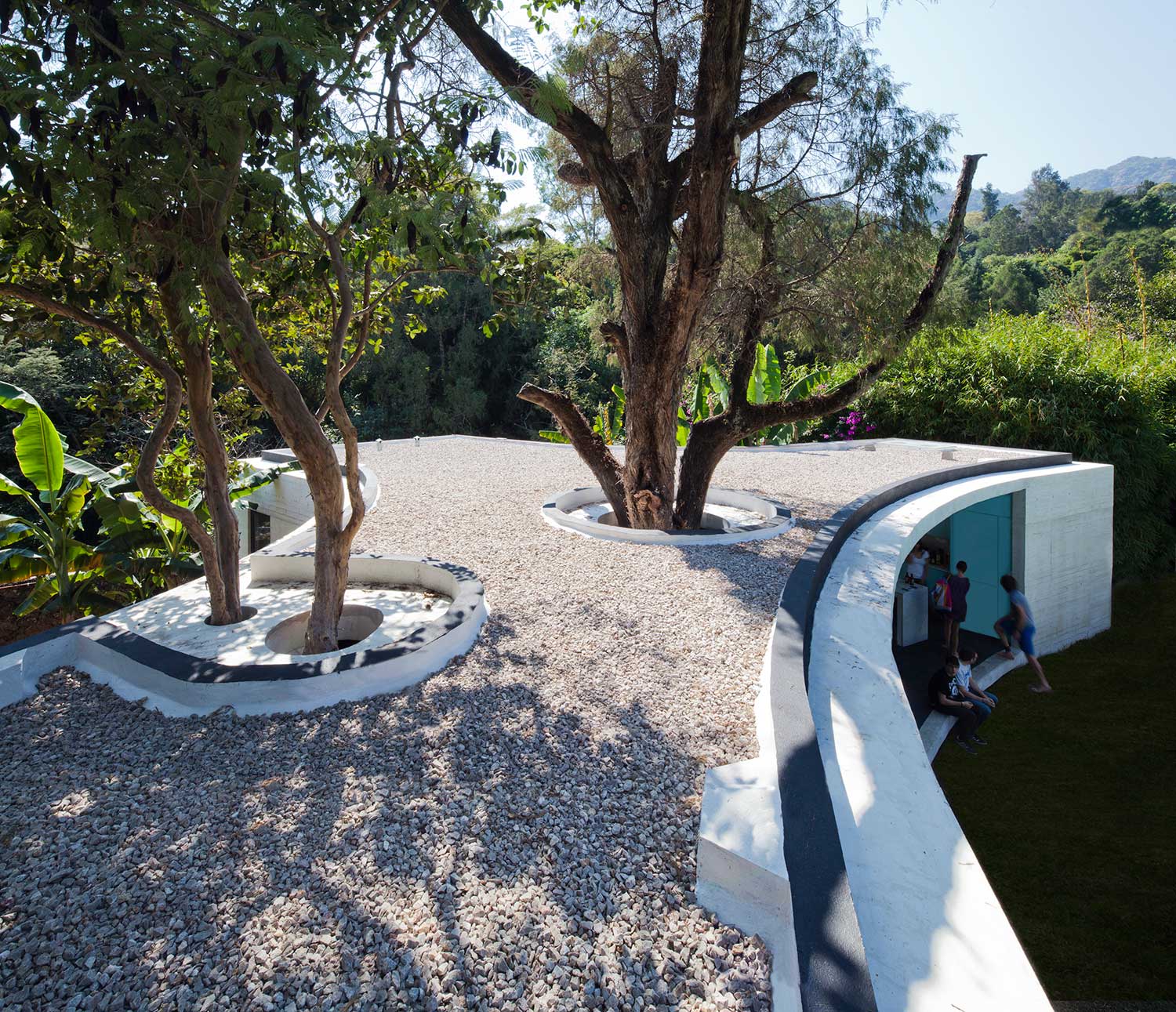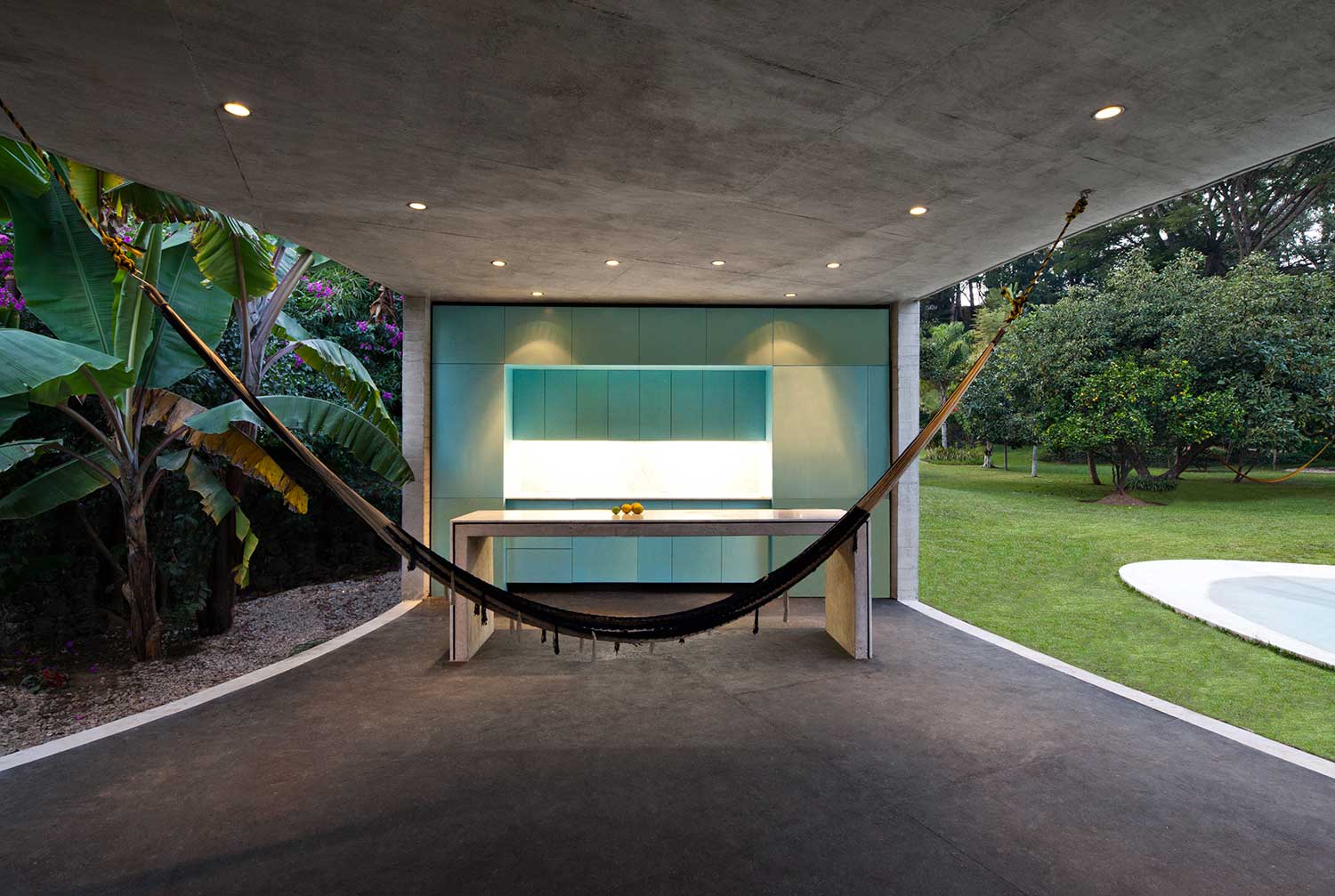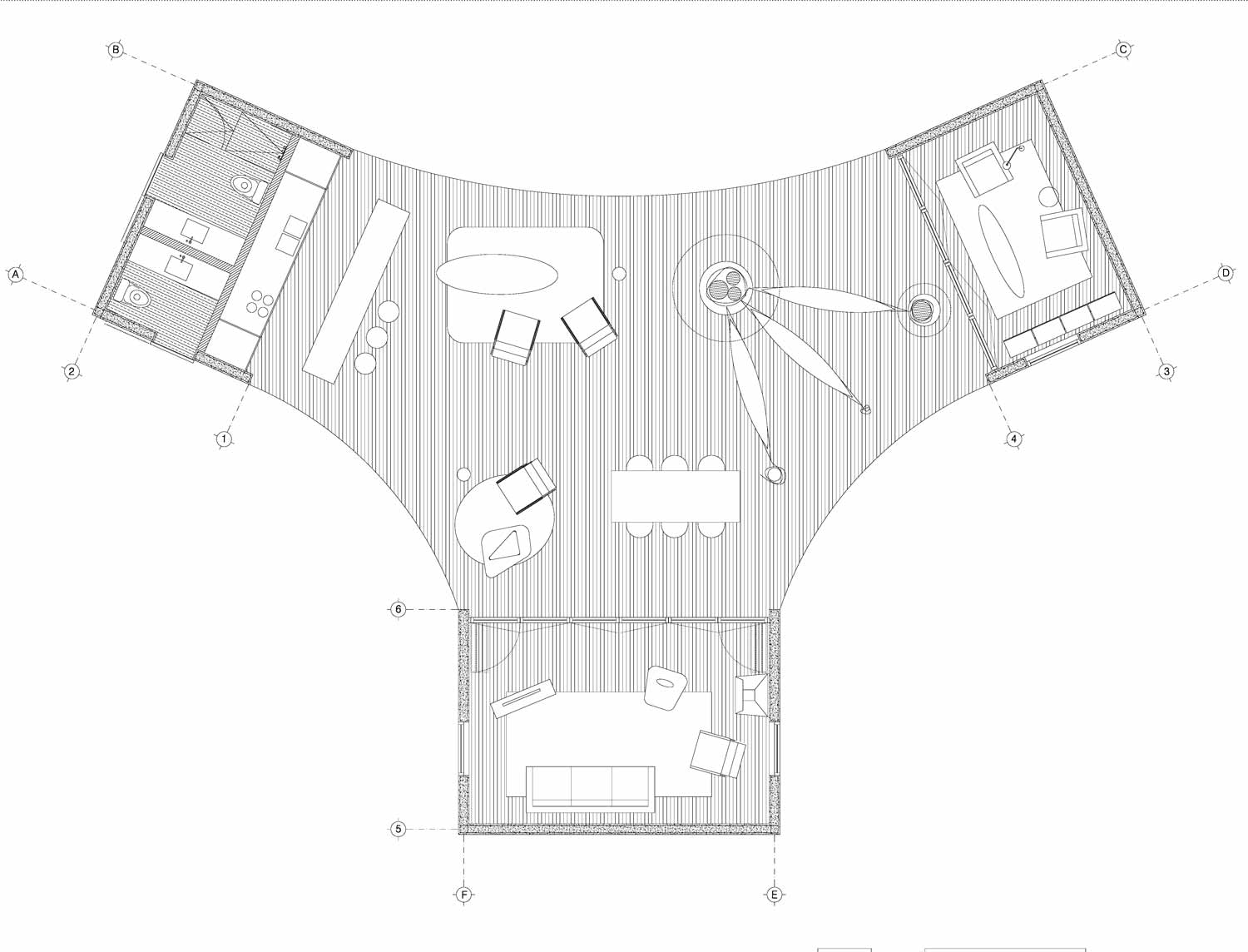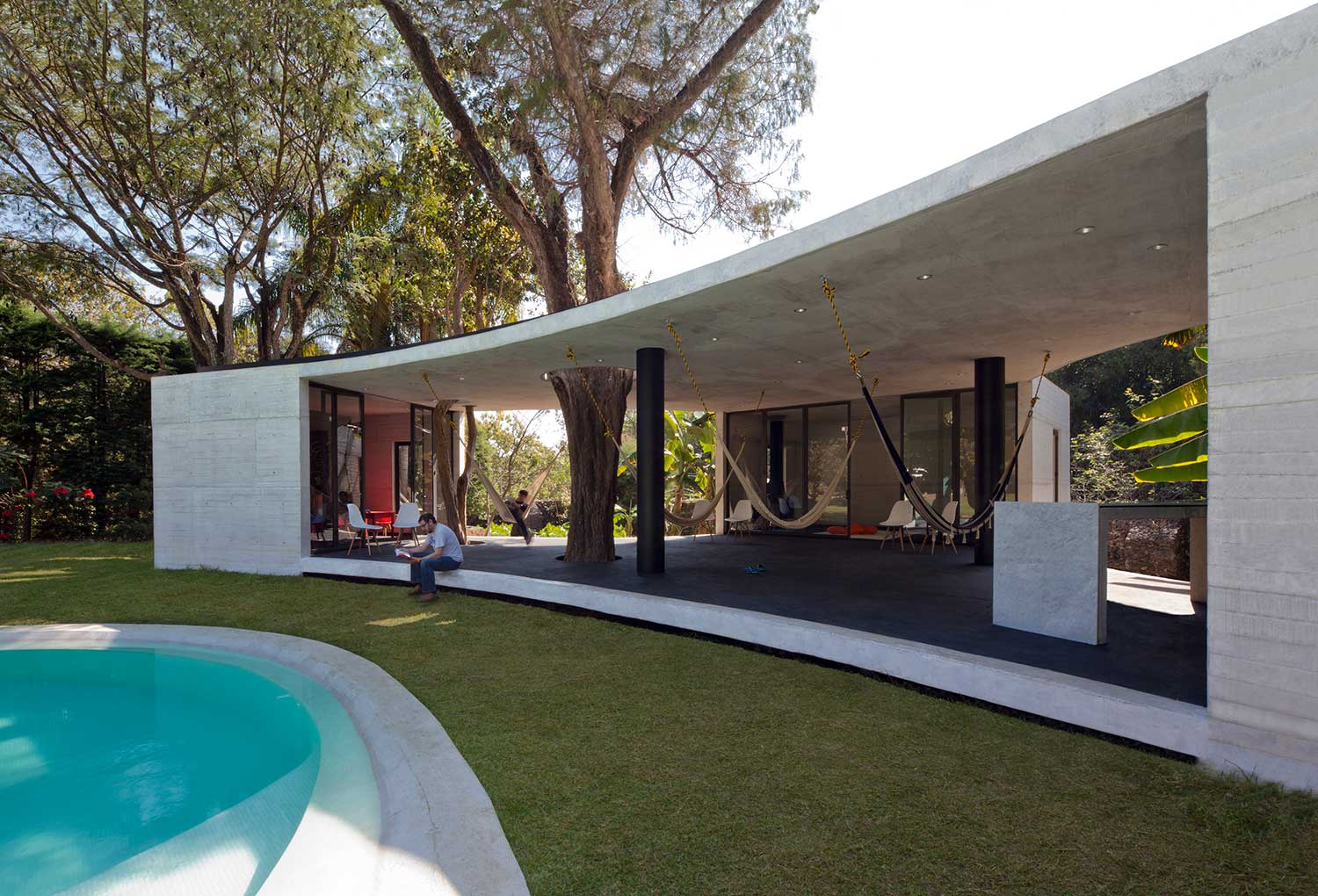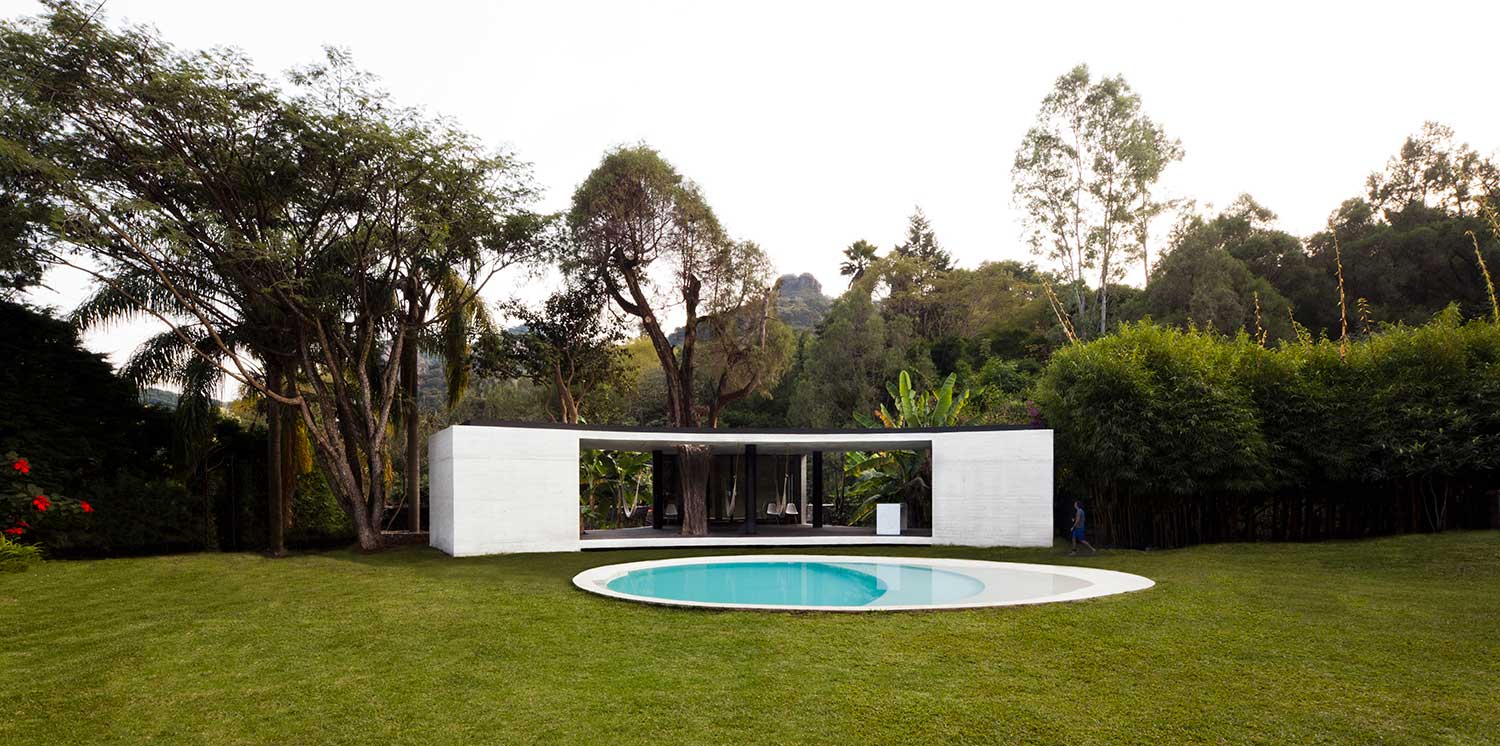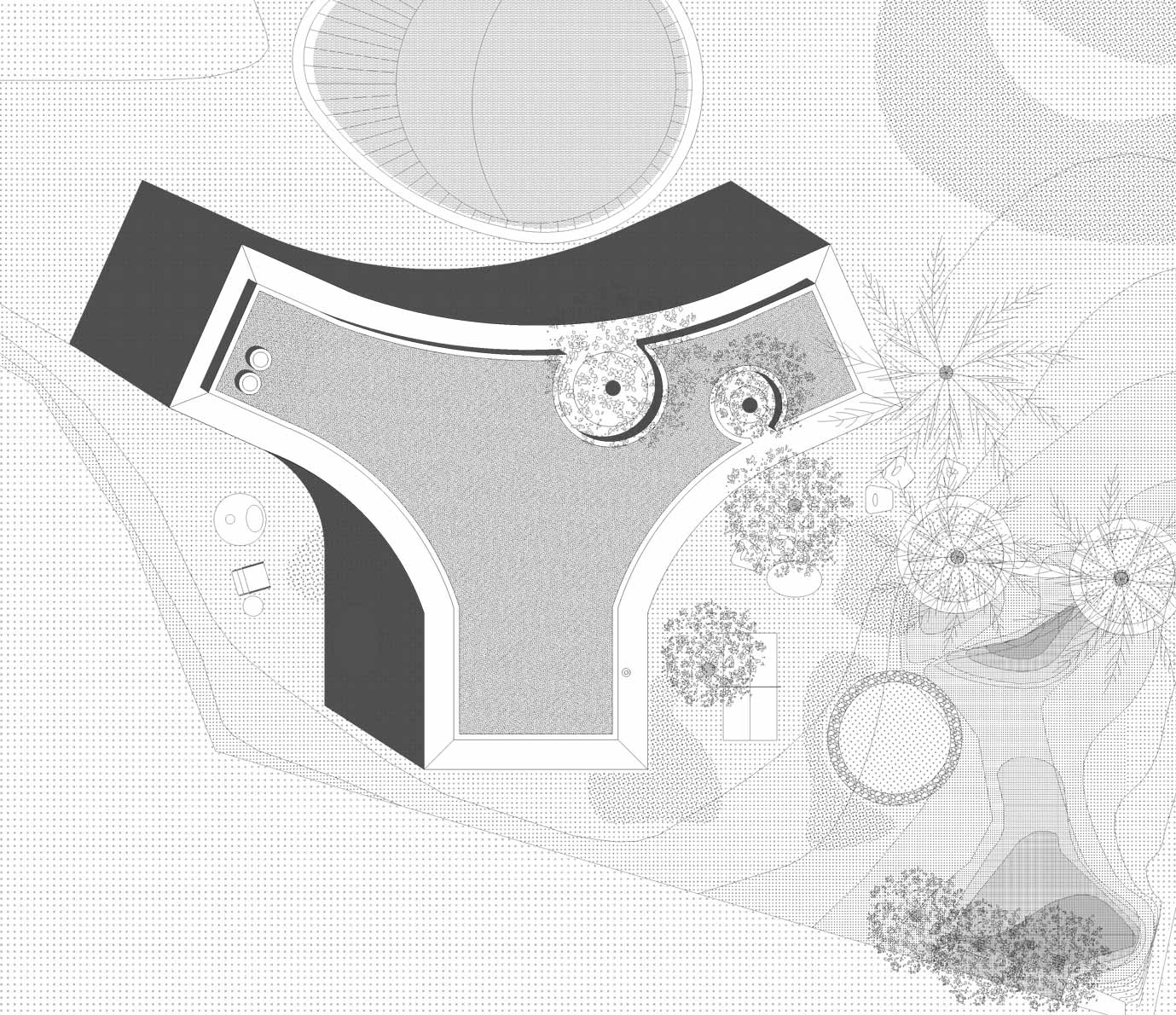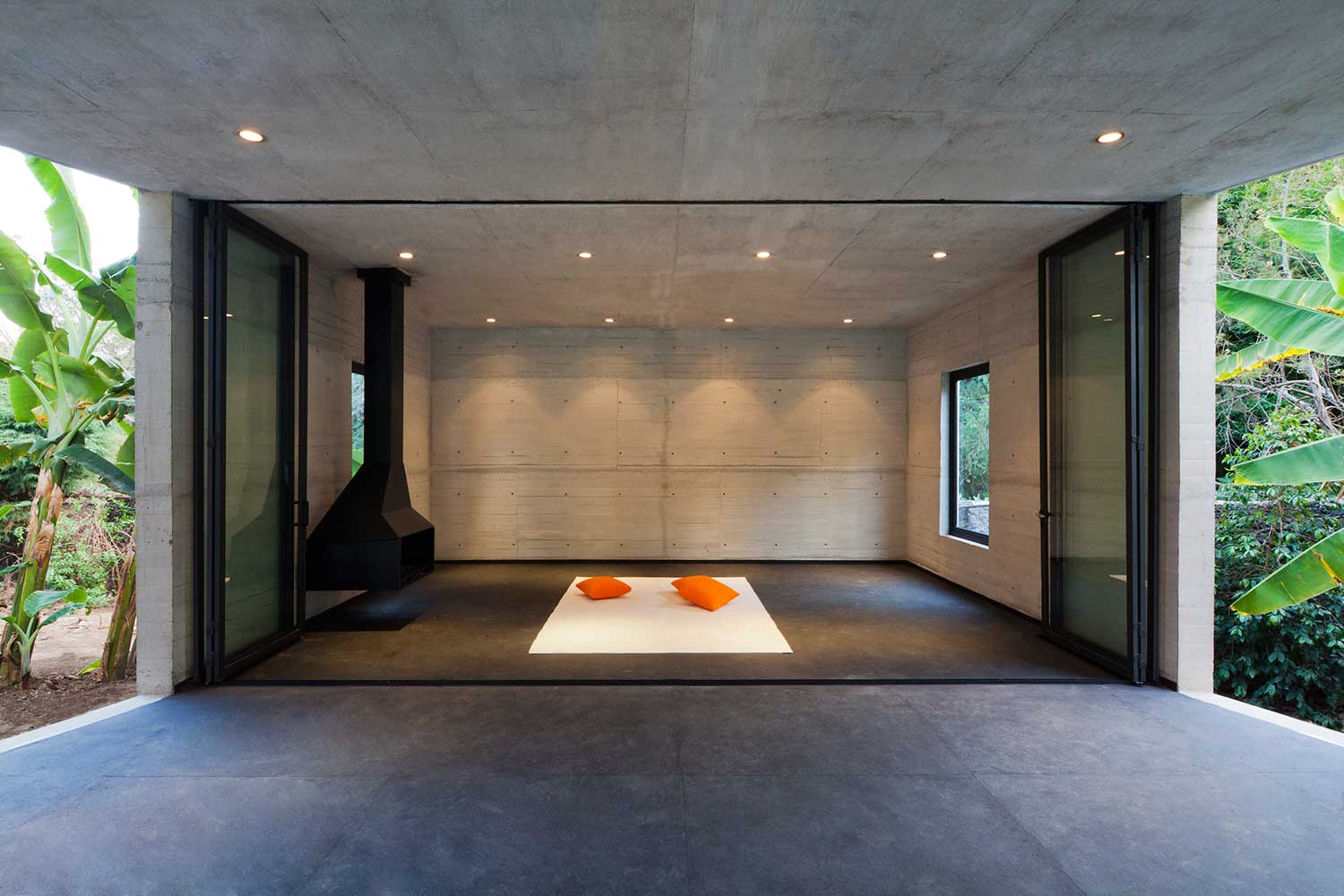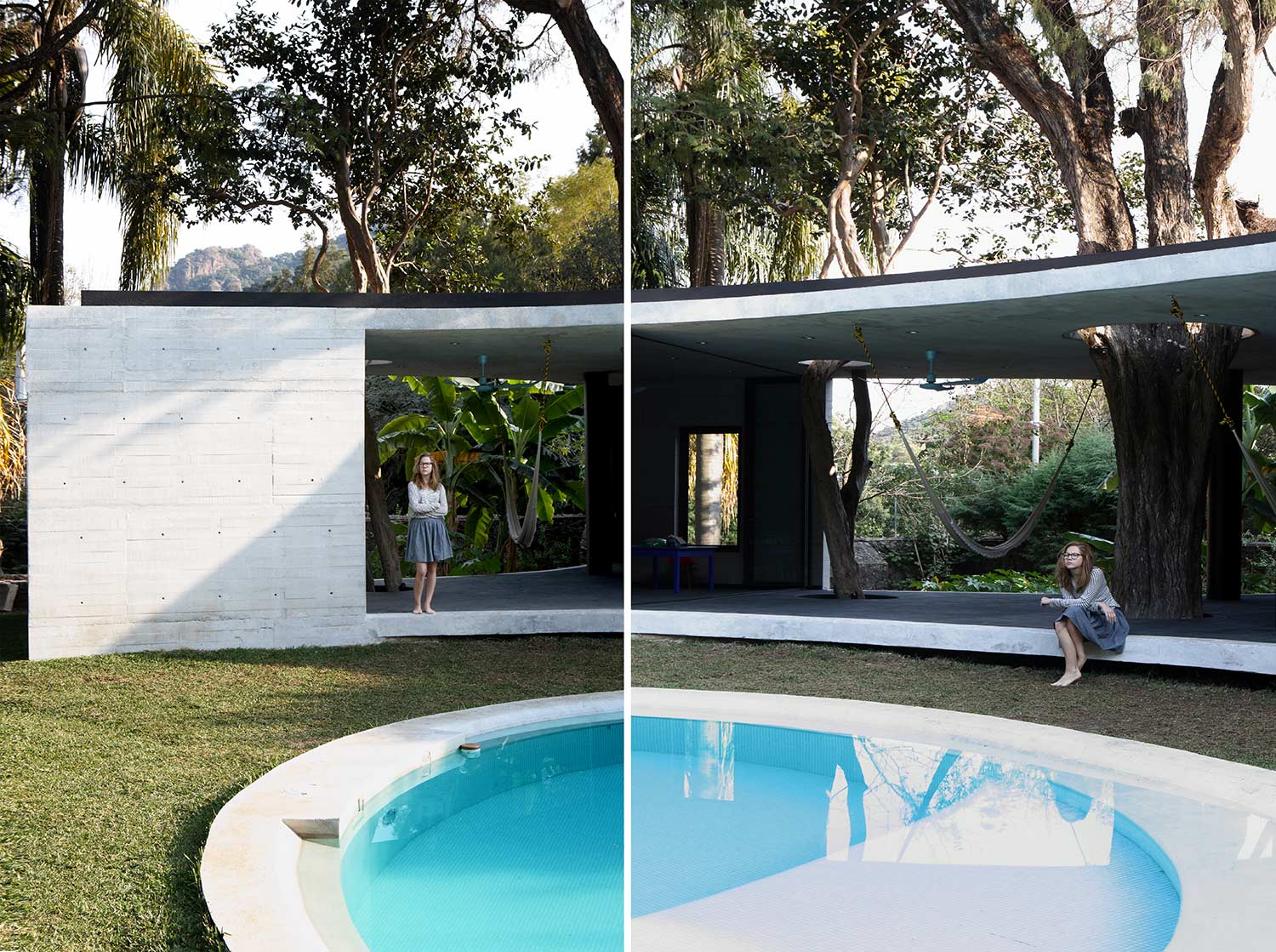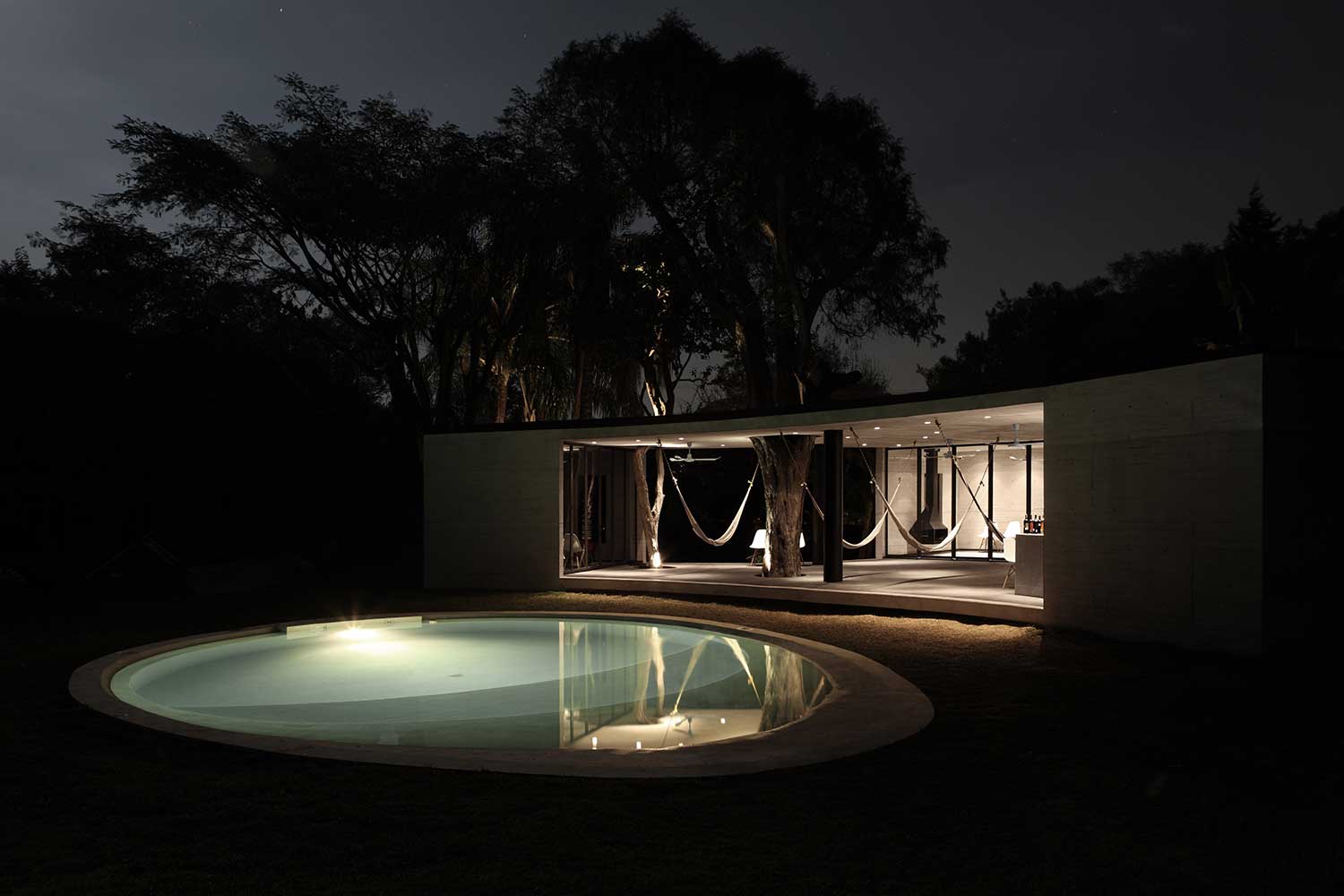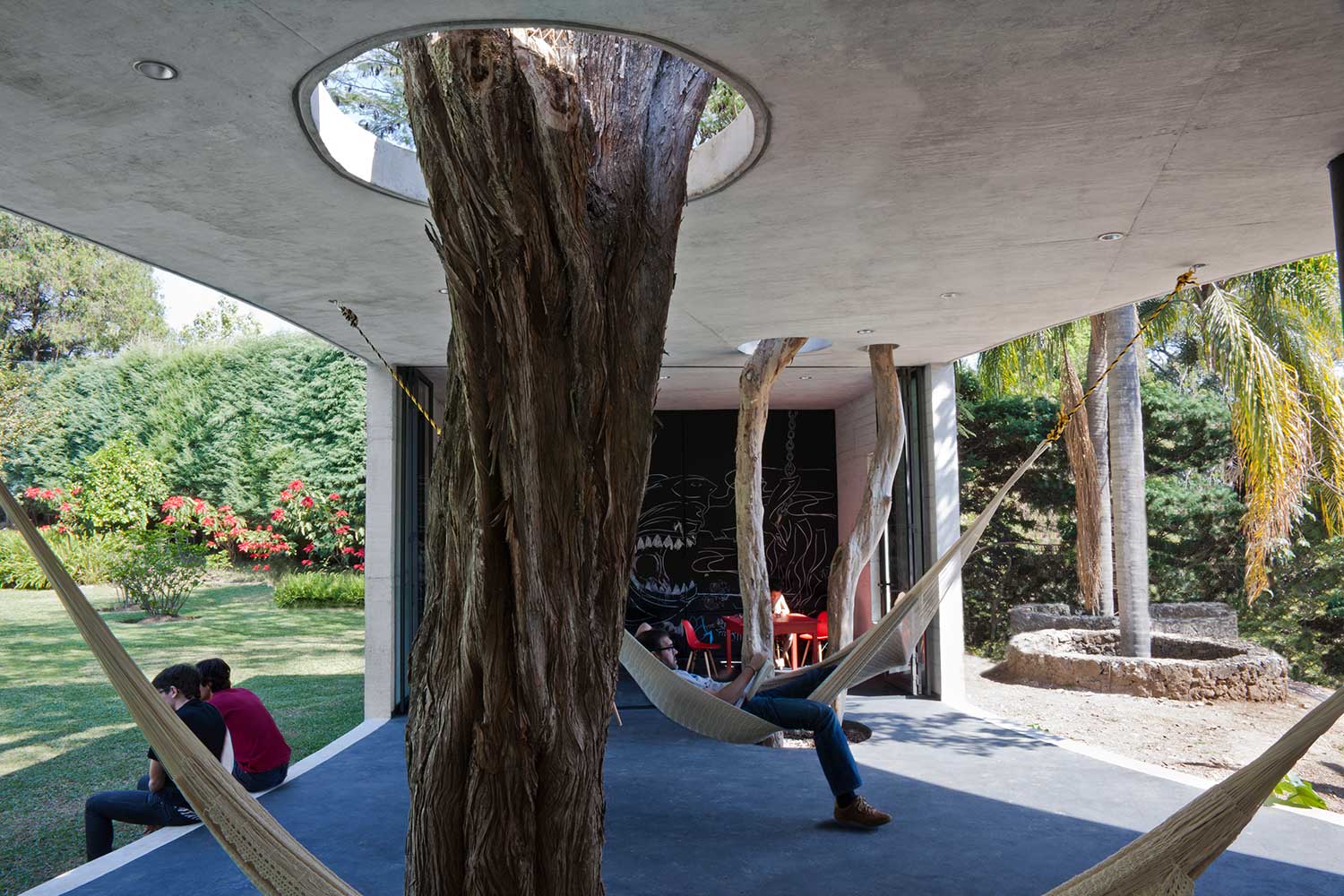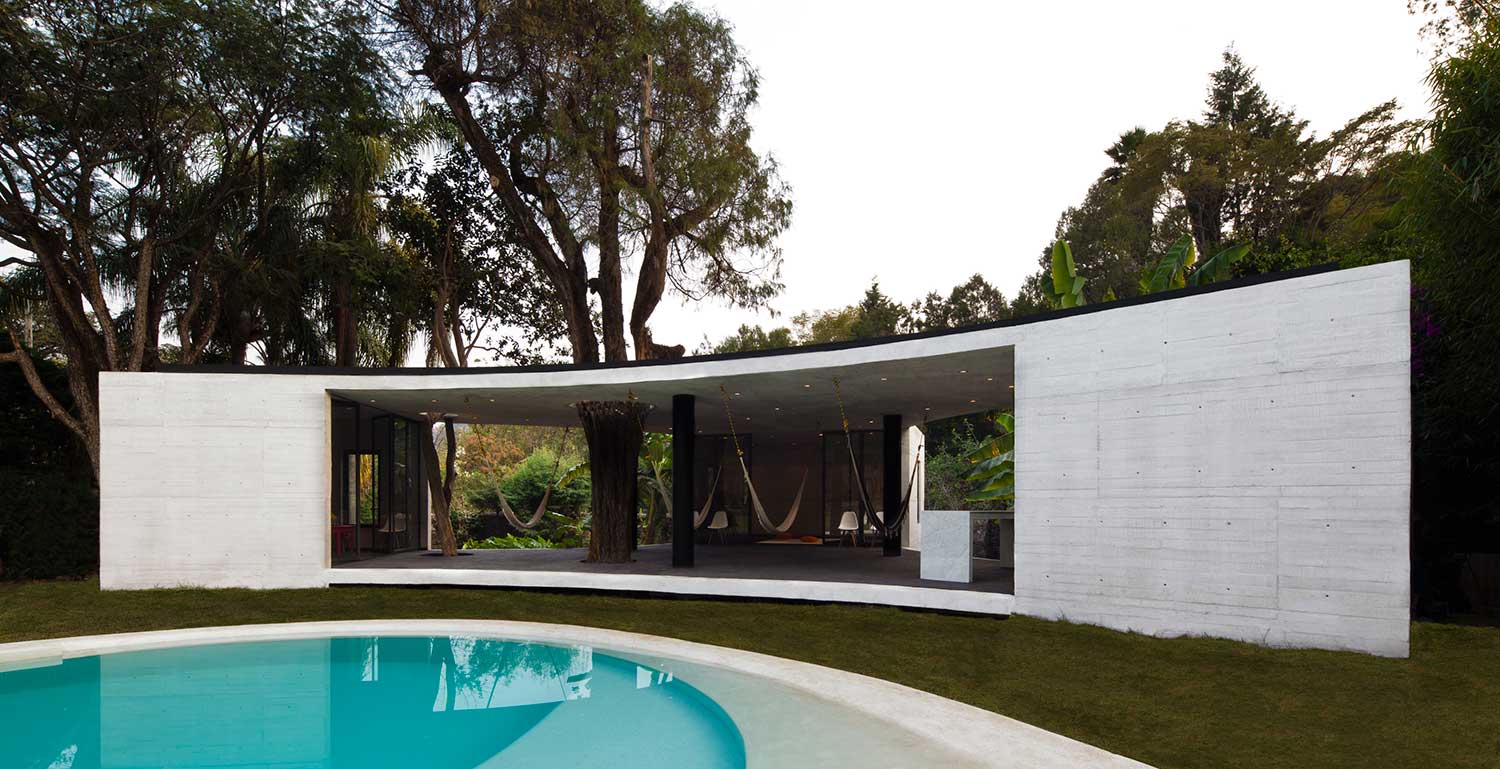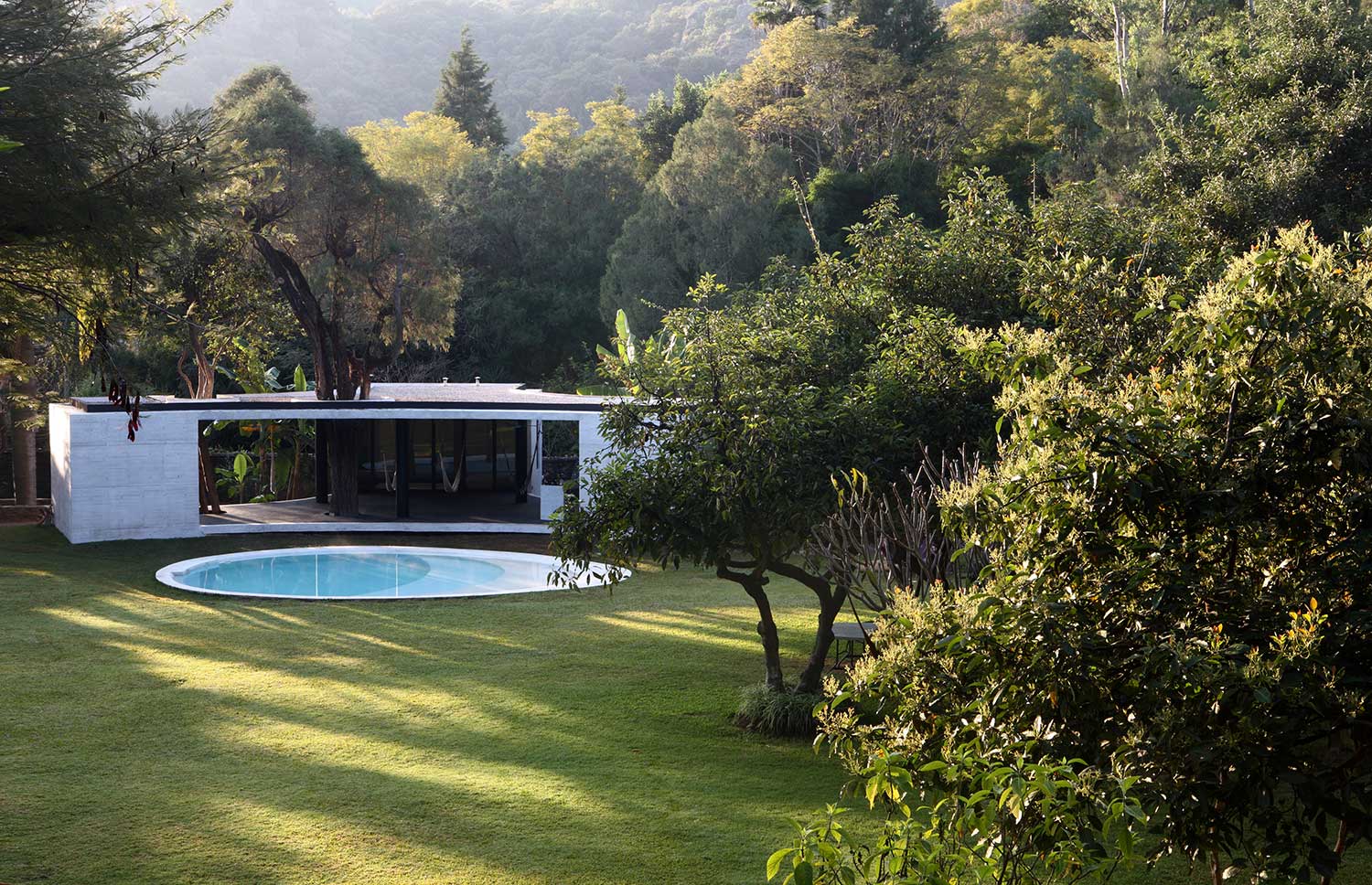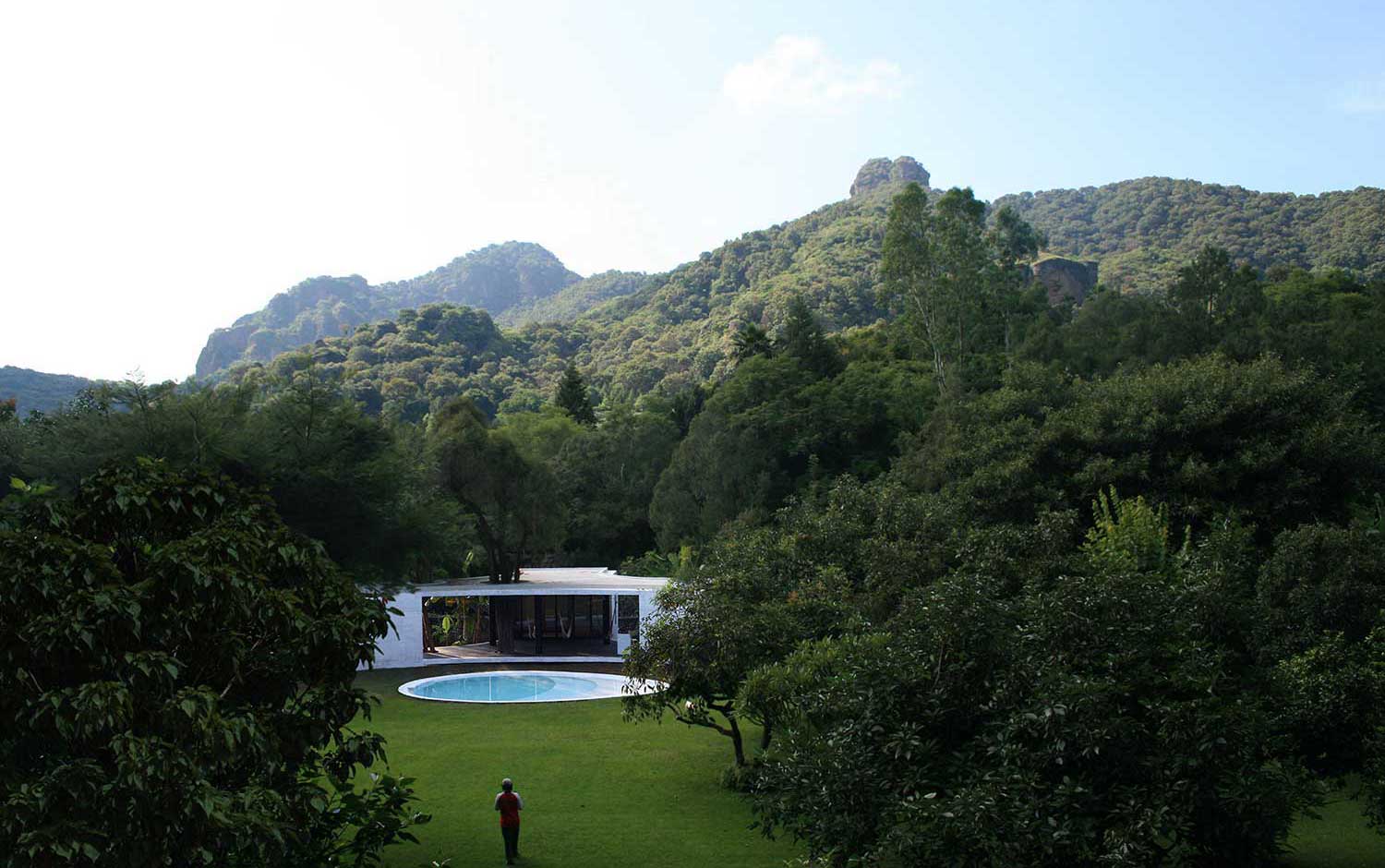


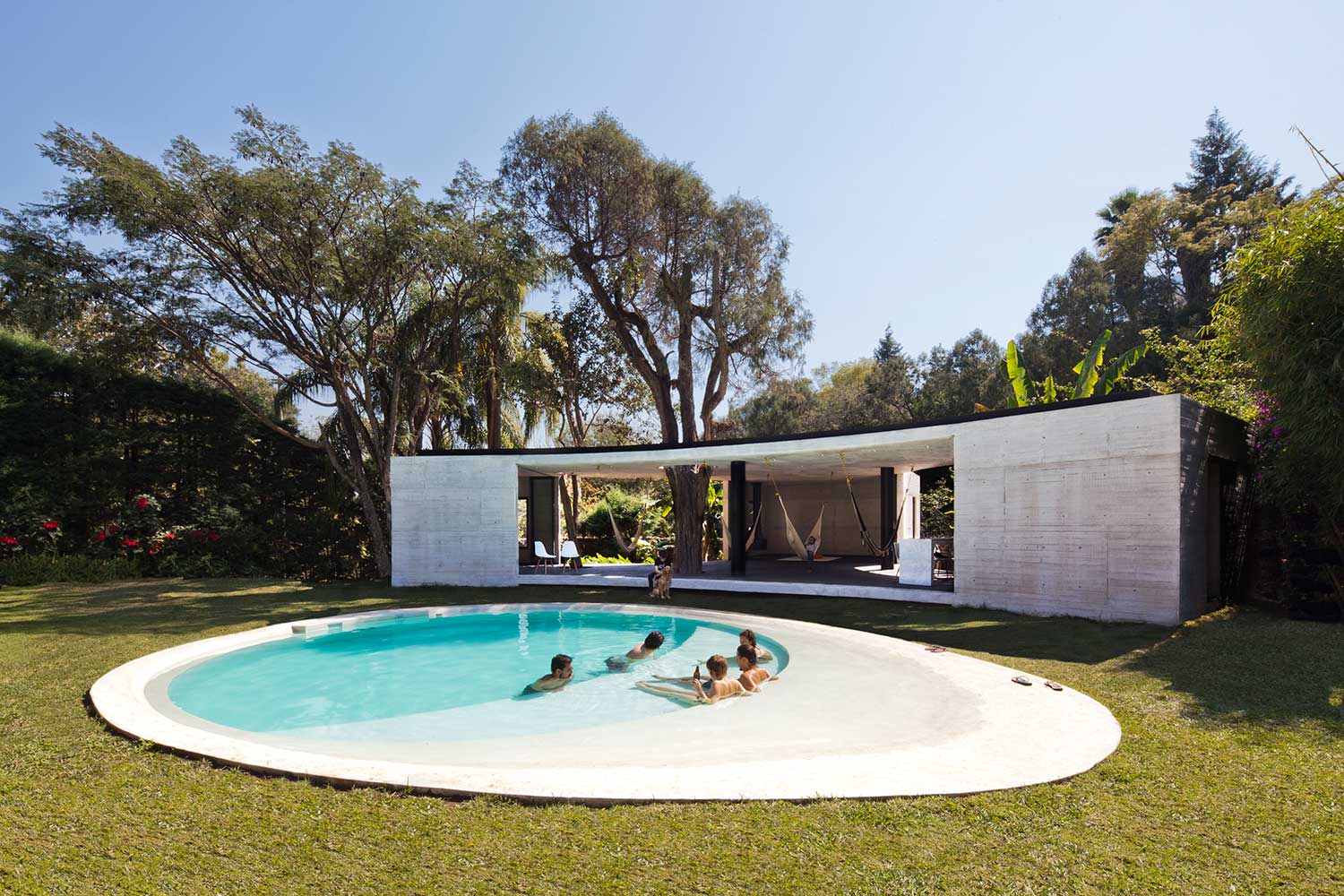


The project is a negotiation between interior and exterior, the construction of a habitable interstitial space, which becomes the central space of the project. The boundaries between open space and content disappear to produce a single spatial entity. The important thing is not the architectural object, not even its limits, what is really transcendent is the spatial experience; and to build it, not only materials inherent to the architectural discipline are used (walls, slabs, columns, etc.) but also softer and changing elements that are given equal or more value to build said spatial experience: plants, trees, flowers, vegetation; all of them generating a diverse and seasonal palette, to build a mixed experience that varies over time and changes throughout the year.
The design establishes three separate rooms designed according to the three planned activities; each of them is defined by its use, but also by a clear container of simple shapes: the first contains a bar with a kitchen, and a changing area and bathrooms; the second is a children’s play area that can be used as a reading area when temperatures drop at night; and finally a larger container that is the living room, a protected, warm and comfortable space suitable for conversation, TV, and so on. But it is the will to give continuity between these three autonomous spaces where the project is reinforced and makes sense; A continuous space is consolidated, in total contact with nature but protected from inclement weather, which expands each of the spaces defined by the containers, defining a unique space, which interrelates each of the parts, building a continuous whole.
And it is through the definition of this central space, through the definition of its shape, that the adjoining courtyards take on their true value. These are as essential to the project as the building itself, and allow the construction of a single total experience. In the same way that the rooms give continuity to the central space in terms of use and space, the adjacent open spaces qualify it and provide it with diversity, giving idiosyncrasy to the open space. The design of the pool is part of this same strategy, and responds to the desire to characterize one of the lateral spaces; its formalization necessarily responds to the structure of the Lounge, incorporating in its form the possibility of multiple uses of water and its enjoyment.
The building is constructed as a plinth to underline the views of the mountains. The intervention wants to be extremely respectful of the existing context and understands that vegetation and outdoor life are the real protagonists of the project; two impressive trees that exist in the place are incorporated into the space as if they were parts of the program itself. The Lounge is built in white concrete not only because it is in the local context of low cost, low maintenance, and high demand for labor, but also and above all, because it allows the building to expose its structural simplicity and its neutrality in the face of a overflowing nature.
